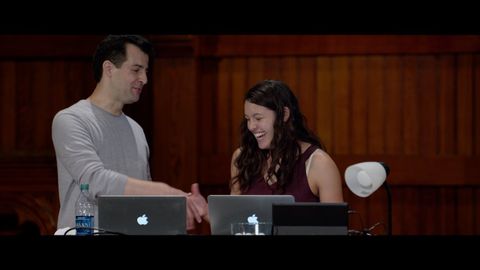第0周,繼續 (Week 0, continued)
Ssutung Liu 發佈於 2021 年 01 月 14 日  沒有此條件下的單字
沒有此條件下的單字US /ˈɔdiəns/
・
UK /ˈɔ:diəns/
- v.t./i.搔癢;刮(出痕跡);退出
- n.抓(癢);刮痕;起點
- n. (c./u.)舞步;一步(的距離);步驟;階段;腳步聲;樓梯,台階,階梯,踏上
- v.i.步驟
US /ˈnʌmbɚ/
・
UK /ˈnʌmbə(r)/
- n. (c./u.)數字;短曲;短歌;總數
- v.t.編了號的;給...編號;計入

